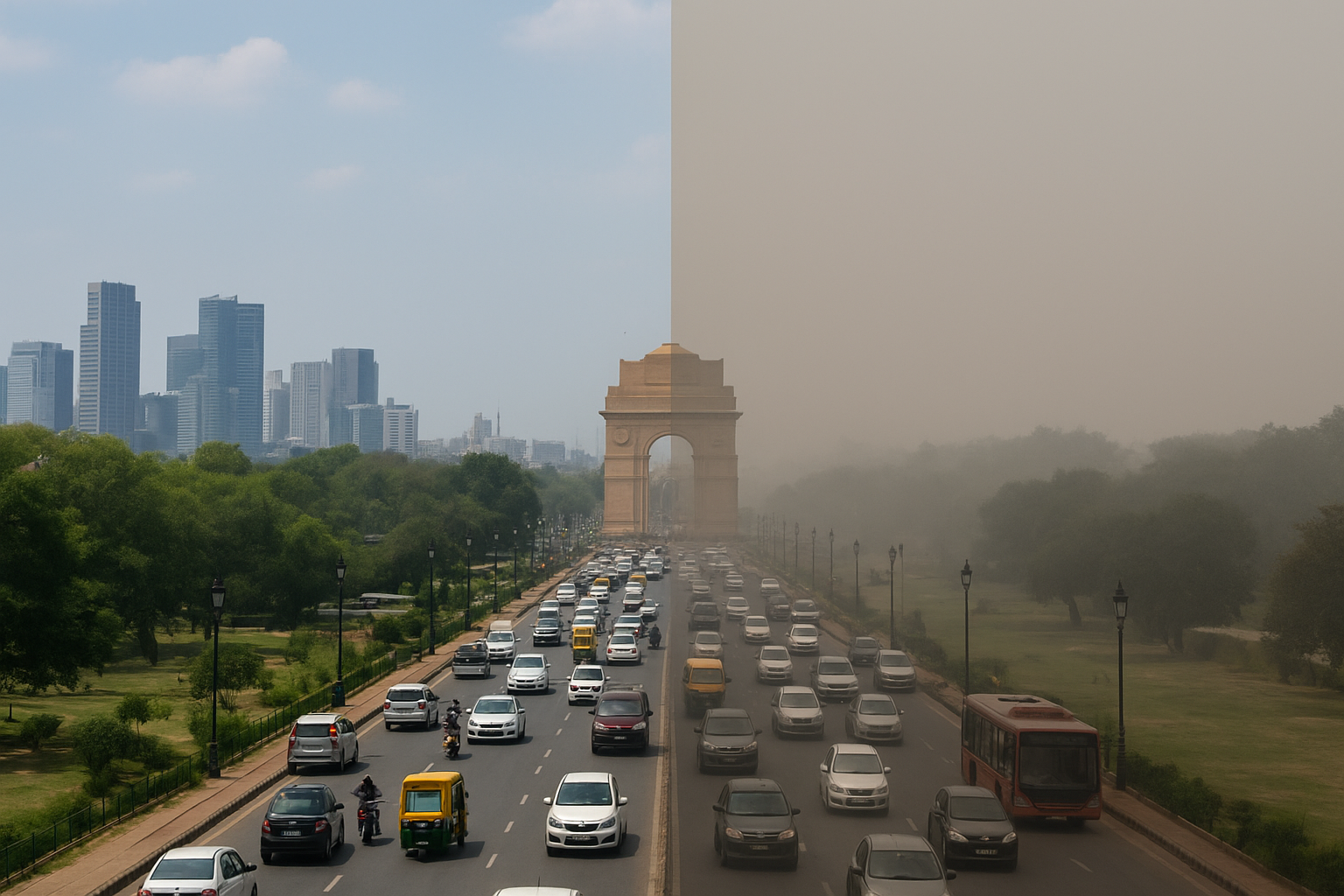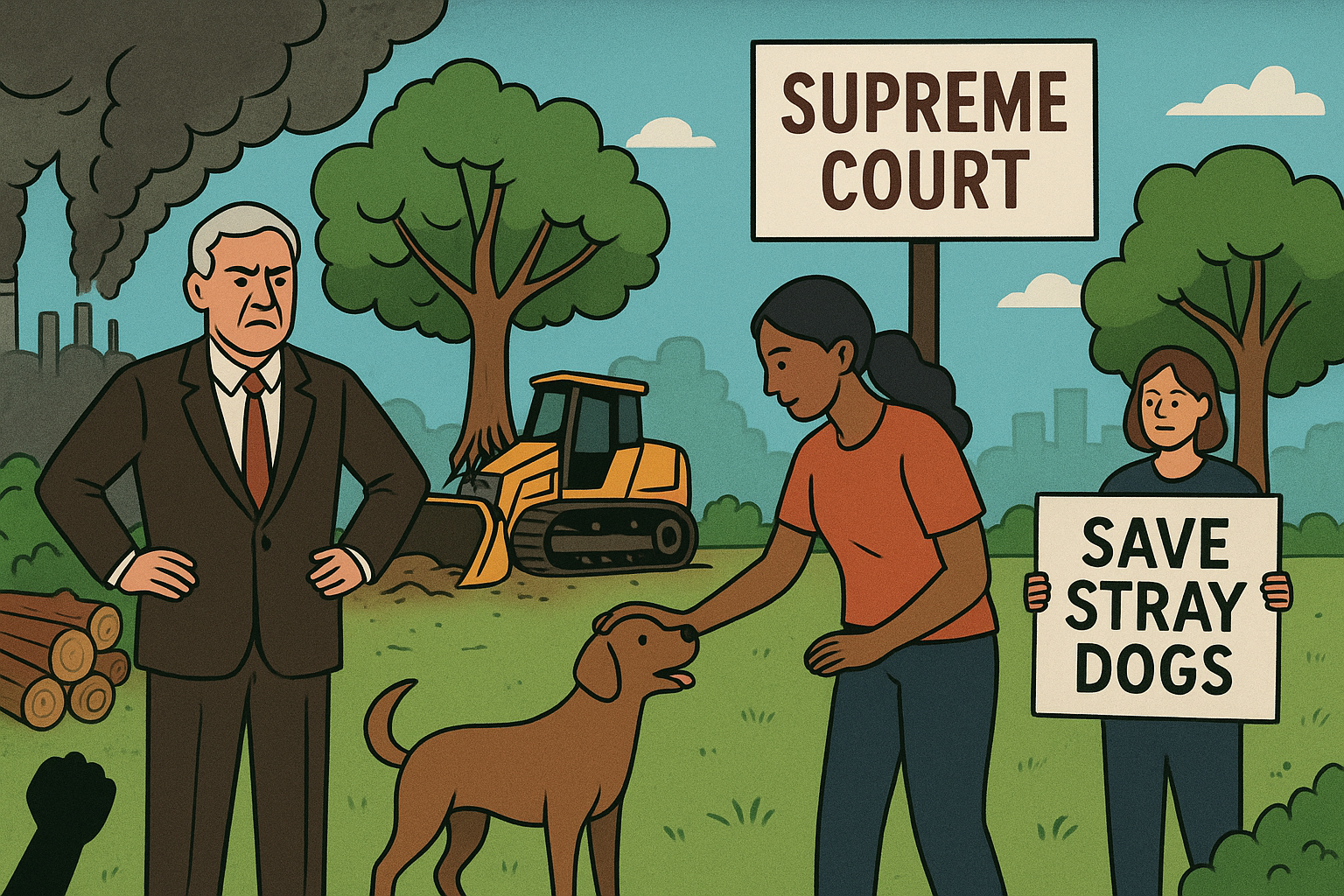Introduction
Delhi, the capital of India, stands as one of the most vibrant yet polluted cities in the world. Despite its modern infrastructure, wide roads, and rapidly growing economy, Delhi has consistently struggled with severe air quality issues. Every winter, the city turns into a grey haze, with visibility dropping drastically and people finding it hard to breathe. The Air Quality Index (AQI) frequently crosses hazardous levels, posing a serious health risk to millions of residents.
Understanding Delhi’s air pollution is not just about counting pollutants; it’s about analyzing the human habits, policies, and urban systems that allow it to persist. From massive traffic congestion to industrial emissions, and from crop residue burning in neighboring states to excessive use of air conditioners and heaters, multiple factors collectively make Delhi’s air nearly toxic during certain months.
Population and Urbanization: The Root of Overload
One of the biggest reasons behind Delhi’s worsening air quality is its dense population. With over 30 million residents in the National Capital Region (NCR), Delhi’s resources are overstretched. Every person adds to the demand for vehicles, energy, housing, and industrial goods—each of which contributes in some way to air pollution.
The rapid urbanization has led to unplanned construction, constant vehicle movement, and limited green zones. Migrants from across India come to Delhi for better opportunities, which increases the pressure on infrastructure. This heavy population density leads to higher emissions of carbon dioxide, nitrogen oxides, and suspended particulate matter (PM2.5 and PM10).
Traffic and Vehicular Emissions
Delhi’s roads are packed with millions of vehicles—from small two-wheelers to heavy trucks carrying goods across the region. Vehicular pollution is one of the major contributors to poor air quality. Exhaust fumes contain harmful gases like carbon monoxide, nitrogen dioxide, sulfur dioxide, and tiny particulate matter that remains suspended in the air for long durations.
Despite government initiatives like the introduction of CNG (Compressed Natural Gas) buses, odd-even schemes, and electric vehicle promotion, the volume of traffic continues to grow. Many vehicles are old and lack proper emission control systems, releasing thick smoke. Over-speeding, unnecessary honking, and long traffic jams worsen the problem, especially during peak hours.
Industrial Activities and Emission Sources
Another critical source of pollution in Delhi is the large number of small and medium industries operating both within and around the city. Many of these industries use low-quality fuels like coal, diesel, and heavy oils that release sulfur dioxide and carbon particles into the air. Brick kilns, metal works, and plastic recycling units are major offenders.
Multinational companies (MNCs) operating in Delhi NCR also add to the energy load. Their office buildings, equipped with air conditioning systems, heaters, and generators, consume massive amounts of electricity. The power demand increases especially during summers and winters, leading to more coal-based power generation and thus, more pollution. Ironically, while these companies create comfortable indoor environments, they indirectly make the outdoor air more toxic.
Negligence Toward Environmental Regulations
The government has made several announcements and bans—like prohibiting single-use plastic bags and controlling industrial waste emissions—but enforcement remains weak. Polythene bags are still widely used in local markets, showing a lack of seriousness among both authorities and citizens. Without strict penalties and consistent monitoring, such rules fail to make any real impact.
Moreover, while strict actions are often taken on minor civic issues like street dogs or local disturbances, environmental violations are overlooked. This lack of balance in policy enforcement reflects poor administrative priorities, where the immediate visible problems get attention, but larger environmental threats remain unchecked.
Firecrackers and Public Behavior
Every year, despite the Supreme Court’s ban on firecrackers, many residents burst them during festivals and even on random occasions. These fireworks release harmful chemicals like lead, barium, and nitrates, which increase PM2.5 levels overnight. What’s worse is that such activities are not limited to Diwali; they often occur during weddings, celebrations, and political events.
In addition, a certain section of the youth engages in unnecessary bike racing, loud exhaust modifications, and overspeeding on Delhi roads. These practices not only cause noise pollution but also increase fuel consumption and emission levels. Lack of public discipline and low environmental awareness make the situation even harder to control.
Crop Residue Burning (Parali)
One of the most severe seasonal contributors to Delhi’s pollution is the burning of crop residue, commonly known as “parali,” in nearby states like Punjab, Haryana, and parts of Uttar Pradesh. Farmers burn leftover straw from paddy fields to prepare for the next crop quickly, as they lack affordable alternatives for disposal. The smoke from thousands of fires travels to Delhi through wind currents and settles over the city, forming a thick smog layer.
Although the government has tried to promote mechanized solutions like the “Happy Seeder” machine and offered subsidies to discourage burning, the practice continues due to economic limitations and lack of awareness among farmers. Every year, Delhi’s air turns almost unbreathable during the post-harvest months of October and November.
Weather and Geographical Traps
Delhi’s geographical position worsens its pollution problem. Being a landlocked city surrounded by industrial and agricultural zones, pollutants have no easy way to disperse. During winter, the cold air traps the pollutants close to the surface in a phenomenon known as “temperature inversion.” This keeps the smoke, dust, and vehicular emissions suspended in the lower atmosphere, leading to heavy smog.
The lack of sufficient rainfall during these months further reduces the natural cleansing of air. As a result, even small increases in emissions during winter lead to large spikes in AQI readings.




